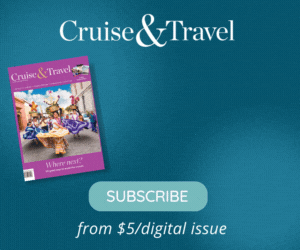In a move which must have left many travel operators concerned, last week the US government issued a general travel alert to Americans with plans to travel to Europe. Without confirming specifics, such as which countries are of particular concern, authorities said that people could continue with their travel plans, but they needed to be extra cautious, and aware that real terror threats exist.
Since 9/11 the world of travel has undoubtedly changed, with more restrictions and higher security enforced on those travellers who want to see the world. Take flying, for example. It used to be an enjoyable part of a holiday, is now a dreaded chore for many, from the in depth security checks requiring you to almost strip down to your undies, to the cramped conditions in economy class.
But how does this alert affect the cruise market? Although many cruisers will have read the news and simply shrugged it off, there will be some who won’t have the stomach for the potential risk. But is changing your plans to cruise really necessary?
Generally speaking, cruising is a very safe way to travel. For a start, cruise lines have to follow a veritable laundry list of rules and regulations, and are subject to regular rigorous inspections. And you know that pesky safety drill you have to attend within the first 24 hours of sailing? That’s done so crew can brush up on their emergency skills, and give passengers an idea of what to so should a mishap at sea occur. Also, in the wake of the Diane Brimble tragedy, cruise lines have tightened up security on many fronts to make life on the high seas safer for all.
When it comes to terrorist risk, however, few cruise ships travel to places of overt danger. And if is something happens in a destination on the itinerary, the ship’s captain is more likely to pass it by rather than risk either his passengers or ship -something I’ve experienced first-hand several times.
In early 2006, just months after the Seabourn Pride was attacked by pirates off Somalia, I was on a world cruise segment from Sydney to Hong Kong on Regent’s Seven Seas Voyager. After departing from Bali, Captain Dag made an announcement that we were giving Sandakan, Borneo, a miss and heading straight for Kota Kinabalu.
He said that intelligence indicated a high risk of a pirate attack along the planned route. Although it was initially an unpopular decision with some passengers – it meant missing out on the a much-anticipated visit to a famous orangutan sanctuary – there’s no doubt the rest of us slept easier that night.
I believe the real risk comes when passengers are away from their ship on land, and when it comes to Europe, how great that risk is depends on what, if anything, happens in the months following the US travel alert.
Ultimately, the best advice is to go with your gut. If the perceived risk makes you uncomfortable about cruising in Europe, then consider changing your plans without making any rash decisions. If it doesn’t concern you, go ahead with your trip and when you are off ship use all of the same caution you would if you were on a land-based holiday. Don’t explore anywhere by yourself which could be deemed risky, carry ID, and if you go off on your own make sure someone knows. And make good use of the ship’s tours. Happy cruising!







